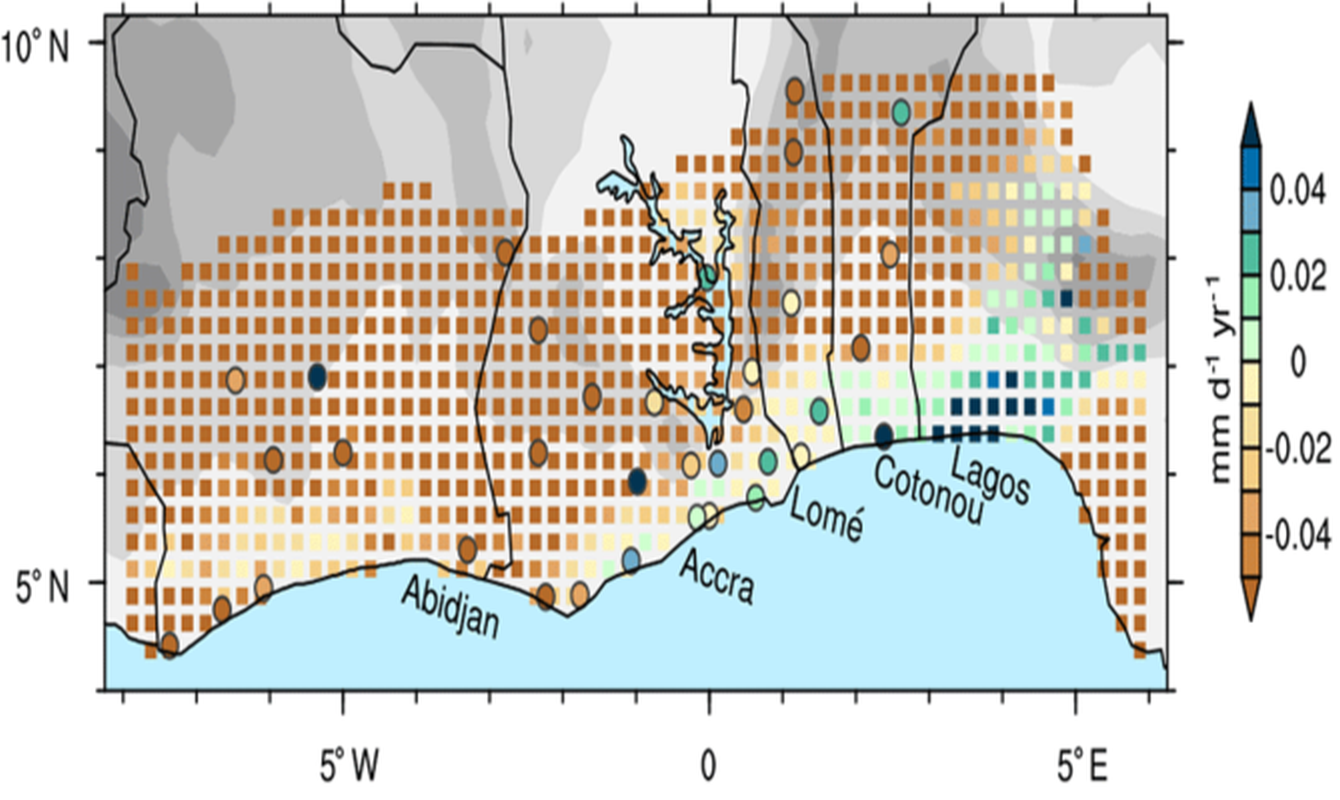Does air pollution reduce rainfall in southern West Africa?
Air pollution is rising rapidly across densely populated southern West Africa with detrimental impacts on human health. But does the pollution also affect climate? This question was posed in a 2015 Nature Climate Change article by Knippertz et al. and investigated extensively as part of the DACCIWA (Dynamics-Aerosol-Chemistry-Cloud Interactions in West Africa) project (Knippertz et al. 2015b). Six years later, a new article by Pante et al. (2021) in the journal Atmospheric Chemistry and Physics warns that there are in fact first indications in observational data of an accelerating reduction of rainfall due to the increasing concentrations of aerosol particles over the region.
“Investigating this problem has been really challenging“, says Prof. Peter Knippertz, leader of the working group on “Atmospheric Dynamics” at IMK-TRO. The reasons for this are manifold:
- Numerical models struggle to realistically represent the complex meteorology of the West African monsoon system.
- There are no long-term aerosol measurements due to a lack of a surface network and cloud contamination in satellite data.
- Changes in rainfall are not driven by pollution alone.
- Aerosol effects change with season and geographically.

“Given this difficult situation”, says Knippertz, “we decided to first remove the effect of changing sea surface temperature from the rainfall trends and then use indirect evidence from measurements of visibility, solar radiation and clouds to detect the pollution signal.” This way, the clearest evidence for a potential aerosol induced drying was found during the so-called “little dry season” in July-August (see Figure). During this season, biomass burning aerosol from Central Africa is imported into West Africa, mixes with local emissions from the many large cities along the Guinea Coast, and spreads quickly with the southerly monsoon winds. “The aerosol particles reduce the amount of sunlight reaching the ground” explains Prof. Andreas Fink, another author of the study, “which in turn reduces warming during the day and the triggering of local showers and thunderstorms.”
_gr.png)
With weaker monsoon winds and no aerosol import from Central Africa during the second rainy season (September-October), the effect remains restricted to the coastal strip. During the first rainy season (mid-May to mid-July) a pollution impact could not be detected with the available data, probably due to a much higher spatial organization of rainfall.
Despite the limited database and low statistical significance of some of the trends, the authors conclude that the balance of all evidence combined strongly suggests a causal relationship between rainfall reduction and anthropogenic air pollution. “This should be a wake-up call for politics in West Africa”, says Knippertz, “as a further increase of emissions will not only harm the health of the population but also endanger future water resources.”
References
Pante, G.; Knippertz, P., Fink, A. H.; Kniffka, A., 2021: The potential of increasing man-made air pollution to reduce rainfall over southern West Africa. Atmos. Chem. Phys., 21, 35–55, doi:10.5194/acp-21-35-2021.
Knippertz, P.; Evans, M.; Field, P. R.; Fink, A. H.; Liousse, C.; Marsham, J. H., 2015: The possible role of air pollution in climate change in West Africa. Nature Clim. Change, 5, 815–822. doi:10.1038/NCLIMATE2727
Knippertz, P.; Coe, H.; Chiu, C.; Evans, M.; Fink, A. H.; Kalthoff, N.; Liousse, C.; Mari, C.; Allan, R.; Brooks, B.; Danour, S.; Flamant, C.; Jegede, O. O.; Lohou, F.; Marsham, J. H., 2015b: The DACCIWA project: Dynamics-aerosol-chemistry-cloud interactions in West Africa. Bull. Amer. Meteorol. Soc., 96, 1451–1460. doi:10.1175/BAMS-D-14-00108.1
Working Group: "Atmospheric Dynamics"
